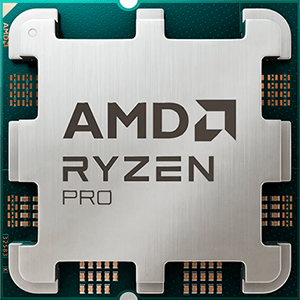Intel Core i7 13700T vs Intel Core i5 12500E
We compared two desktop CPUs: Intel Core i7 13700T with 16 cores 1.4GHz and Intel Core i5 12500E with 6 cores 2.9GHz . You will find out which processor performs better in benchmark tests, key specifications, power consumption and more.
Main Differences
Intel Core i7 13700T 's Advantages
Released 1 years late
Higher specification of memory (5600 vs 4800)
Larger memory bandwidth (89.6GB/s vs 76.8GB/s)
Larger L3 cache size (30MB vs 18MB)
Intel Core i5 12500E 's Advantages
Newer PCIe version (5 vs 5.0)
Higher base frequency (2.9GHz vs 1.4GHz)
Score
Benchmark
Geekbench 6 Single Core
Intel Core i7 13700T
+53%
2499
Intel Core i5 12500E
1625
Geekbench 6 Multi Core
Intel Core i7 13700T
+47%
11810
Intel Core i5 12500E
8002
General Parameters
Jan 2023
Release Date
Jan 2022
Intel
Manufacturer
Intel
Desktop
Type
Desktop
x86-64
Instruction Set
-
Raptor Lake
Core Architecture
Alder Lake-S
i7-13700T
Processor Number
-
LGA-1700
Socket
Intel Socket 1700
UHD Graphics 770
Integrated Graphics
UHD Graphics 770
-
Generation
Core i5 (Alder Lake-S)
Package
10 nm
Manufacturing Process
10 nm
65 W
Power Consumption
65 W
219 W
Max Turbo Power Consumption
-
100°C
Peak Operating Temperature
-
-
Foundry
Intel
-
Die Size
163 mm²
CPU Performance
8
Performance Cores
-
16
Performance Core Threads
-
1.4 GHz
Performance Core Base Frequency
2.9 GHz
4.8 GHz
Performance Core Turbo Frequency
4.5 GHz
8
Efficiency Cores
-
8
Efficiency Core Threads
-
1.0 GHz
Efficiency Core Base Frequency
-
3.6 GHz
Efficiency Core Turbo Frequency
-
16
Total Core Count
6
24
Total Thread Count
12
100 MHz
Bus Frequency
100 MHz
14
Multiplier
29
80 K per core
L1 Cache
80 KB per core
24 MB
L2 Cache
7.5 MB
30 MB
L3 Cache
18 MB
No
Unlocked Multiplier
No
-
SMP
1
Memory Parameters
DDR5-5600, DDR4-3200
Memory Types
DDR4-3200, DDR5-4800
192 GB
Max Memory Size
128 GB
2
Max Memory Channels
2
89.6 GB/s
Max Memory Bandwidth
76.8 GB/s
Yes
ECC Memory Support
Yes
Graphics Card Parameters
true
Integrated Graphics
true
300 MHz
GPU Base Frequency
300 MHz
1600 MHz
GPU Max Dynamic Frequency
1450 MHz
256
Shader Units
-
16
Texture Units
-
8
Raster Operation Units
-
32
Execution Units
32
15 W
Power Consumption
-
0.78 TFLOPS
Graphics Performance
-





